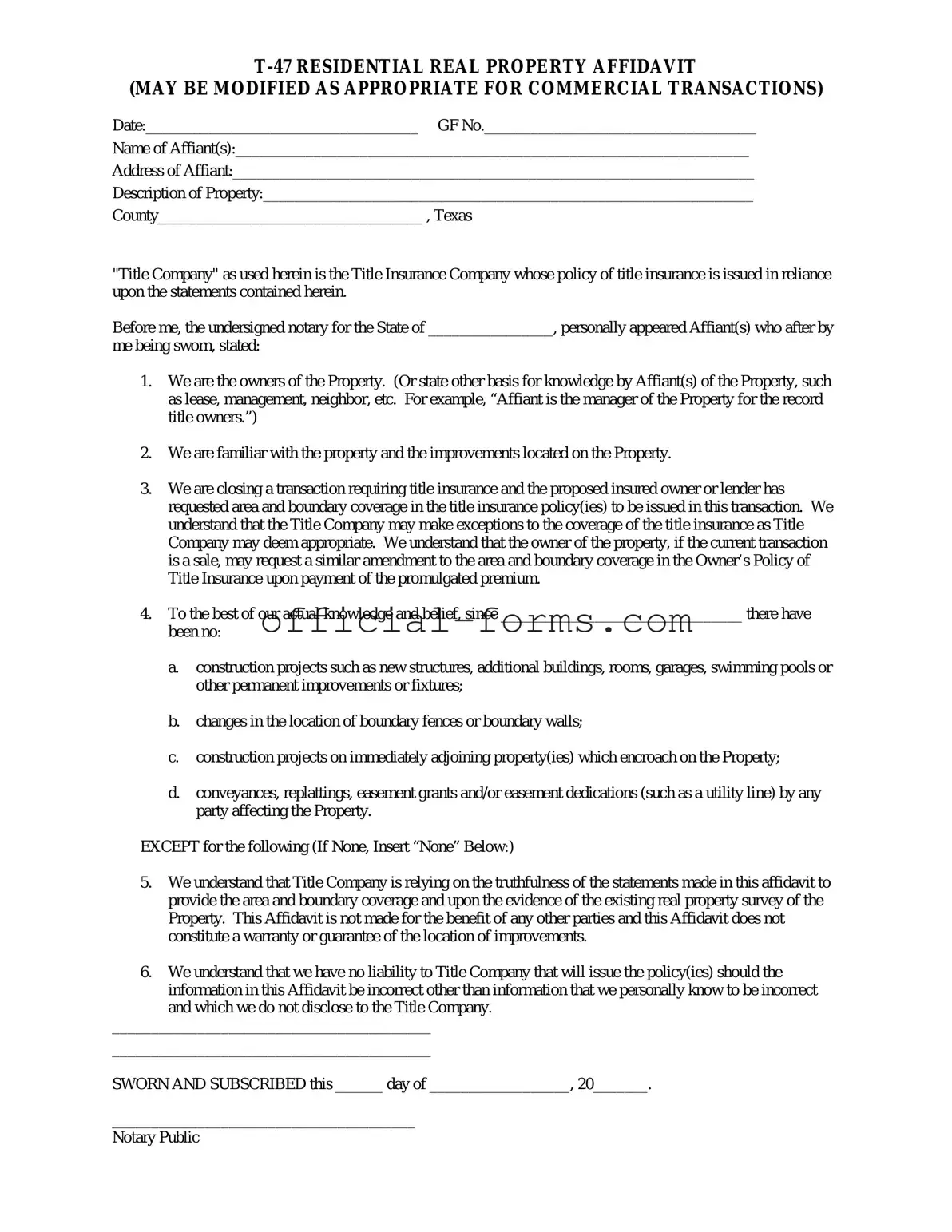Filling out the Texas residential property affidavit T-47 form can be a straightforward process, but many people make common mistakes that can lead to complications. One frequent error is failing to provide accurate property descriptions. The form requires specific details about the property, including its legal description. Omitting or incorrectly stating this information can delay the transaction.
Another mistake is neglecting to sign the affidavit. Many individuals focus on filling out the form but overlook the importance of their signature. Without it, the affidavit is not valid, and the intended purpose of the document cannot be achieved.
People often forget to date the affidavit. Including the date is crucial as it establishes the timeline of the document. A missing date can raise questions about the validity of the affidavit and may lead to legal disputes later on.
Some individuals do not provide the necessary supporting documentation. The T-47 form may require additional documents to substantiate claims made within the affidavit. Failing to attach these documents can result in delays or rejections.
Another common issue is the misinterpretation of the form's requirements. Some individuals may misread the instructions, leading to incorrect information being submitted. It is essential to read the entire form and accompanying instructions carefully to ensure compliance.
People sometimes forget to check for consistency across all documents. Discrepancies between the T-47 form and other legal documents can create confusion and may necessitate further clarification, complicating the process.
Inaccurate information regarding ownership is another prevalent mistake. It is vital to ensure that all names and ownership details are correct. Errors here can lead to significant legal issues, including disputes over property rights.
Some filers fail to consider the implications of the affidavit. The T-47 form serves as a declaration about the property’s condition and ownership. Misrepresenting facts can lead to legal repercussions, including liability for fraud.
Lastly, individuals often overlook the importance of consulting a legal professional. While the form may seem simple, having an expert review it can prevent many of these mistakes. Legal advice can provide clarity and ensure that the affidavit is filled out correctly.
